The Casta Tomb in Amphipolis will open its gates next summer . First for groups of researchers and then for the public. Following the recent approval of the architectural preliminary design by the Central Archaeological Council (KAS), for the external construction of the main entrance and the configuration of the surrounding area with visitable routes, the Ministry of Culture has engaged in a road race in order to achieve their objectives of the timetable that Minister Lina Mendoni has set. At the same time, the interest of the archeological research turns to the adjacent “Hill 133”. With two routes at the base and at the top of the Casta Tomb
and through an external construction, which will refer minimally to an ancient portico, will become accessible to the public, the much-discussed monument. The work, which will be carried out in the immediate future, is based on the studies prepared by Dr. architect-engineer of the Ministry of Culture Michalis Lefantzis and head of Archaeological Works and Studies of the Ephorate of Antiquities of the City of Athens, and were approved by the KAS.
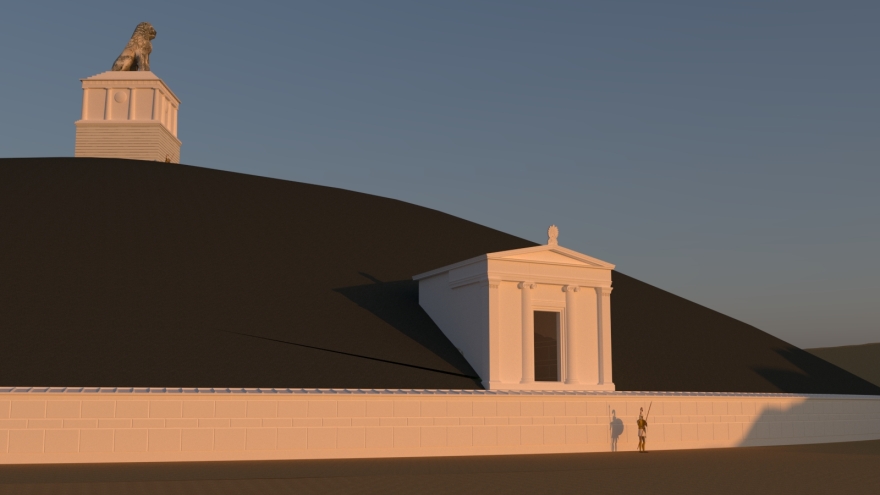


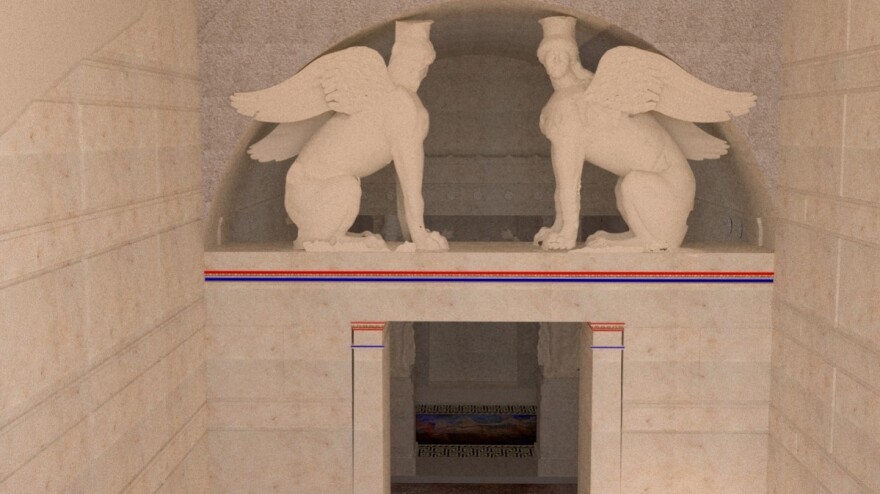
The minimal protective shell and the glass corridors inside
. According to the study, the proposed shell was designed in such a way as to refer to the geometry and dimensions of the ancient portico, but without copying it, with completely abstract architectures. characteristics. The goal is the harmonious presence of the construction in the space, in relation to the monumental ensemble, while contributing to the accessibility and the view by the visitors.
At the new entrance on the artificial shell, the access will be made through a discreet metal ladder, 1.60 m wide, while right next to it will be built a small elevator for the access of the disabled as well as for the transport of sensitive marble objects to and from the inside of the monument. .
Inside the monument, elevated access floors are formed with steps, which lead to the glass floor, which will cover the pebbles of the first area. In the next two spaces, a perimeter corridor will be constructed with a glass floor, both for the view of the Caryatids and the mosaic of “The Rapture of Persephone.
The temperature and humidity inside the burial monument will be constant and will be ensured by electromechanical installation, along with lighting and air conditioning.
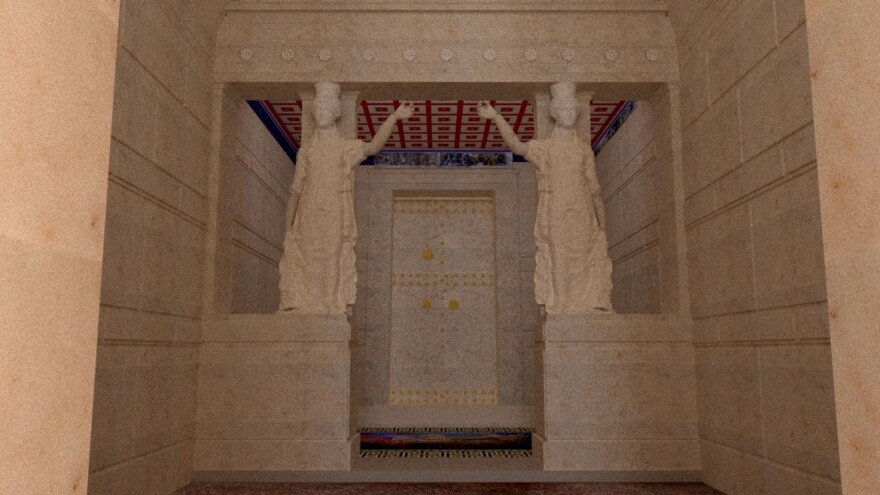
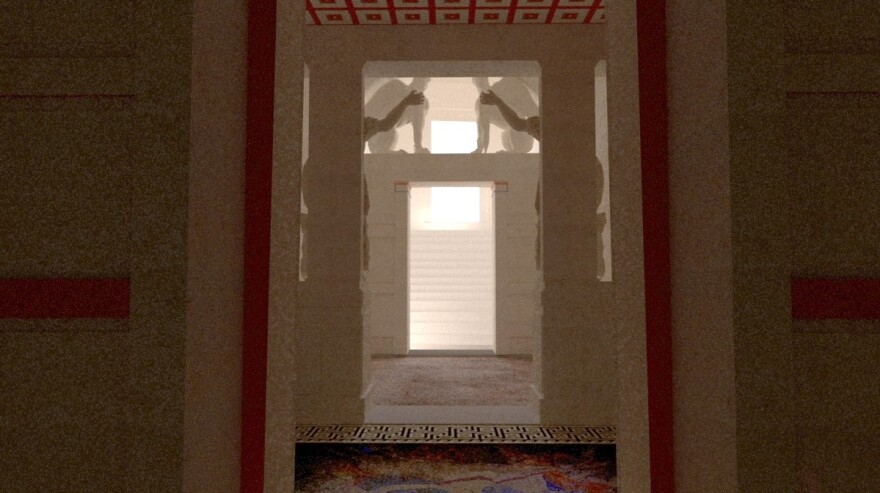
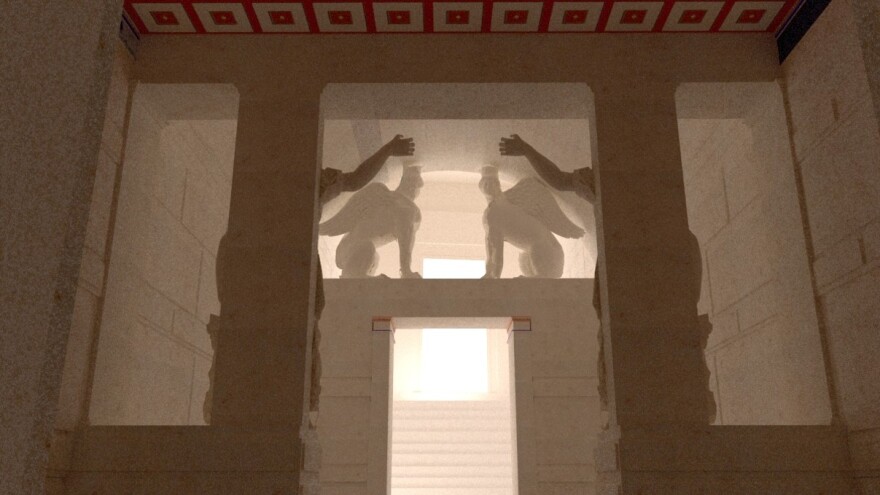
The two paths
Outside the tomb will be formed access corridors to the monument, but also its individual elements, as in parts of the imposing marble precinct. The corridors will also allow the wheelchair to move comfortably up to the elevator, near the entrance leading to the inside of the monument.
Access to the site of the monument will follow today’s arrangement. The main visitable route, 320 m long, will start south of the current temporary entry point, to the west side of the Tomb and following the curved layout of the enclosure will be directed SE to the entrance of the Burial Monument, meeting part of the enclosure, which will restored in the next period. In the same area, a flat viewing area will be formed, while the corridor will end on the SE side of the Tomb, and in a part of the enclosure that is fully preserved and impresses for its perfect technique.
At the same time there will be a secondary route, 210 m long, to the top of the Tomb, where older burials have come to light, from the Iron Age, but also part of the foundation of the Tomb Sign at the top where the tomb was originally built. pedestal with the Lion of Amphipolis. At the end of this route, the visitor will be able to see panoramically the carving of the circular marble enclosure, but also the entire wider area, with the mountain range of Paggaio, the river Strymon, the borders of the dried lake Kerkinitis, as well as the ancient Amphipolis.
The routes will be constructed with “pressed soil” with a stabilizer and will be marked with a simple survey in specific parts of them.
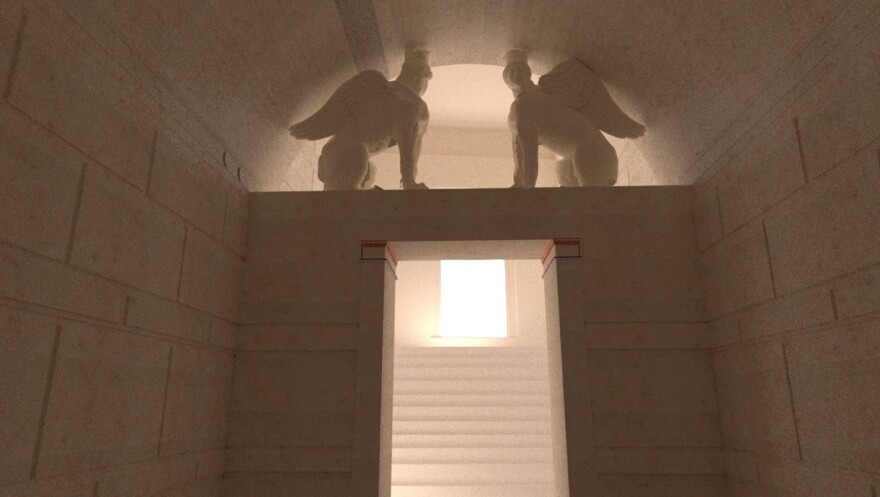
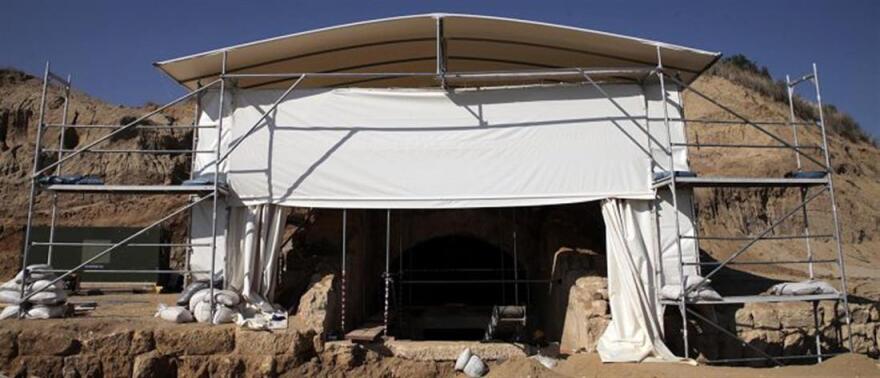
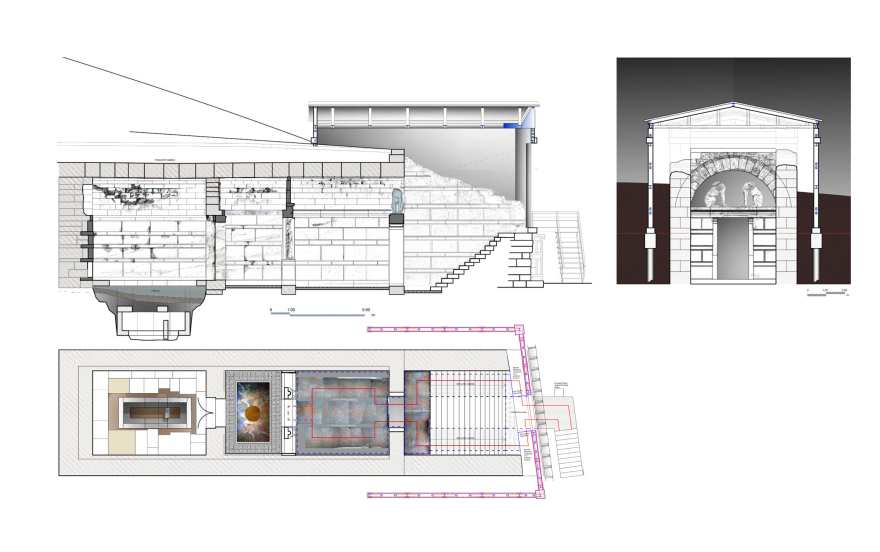
Delays due to quarantine
During this period, the earthworks for the restoration of the shape and form of the Tomb, which were delayed due to the COVID-19 pandemic, are being completed. Geotechnical works will follow, which provide for the construction of metal boxes with lightweight materials, in order to create retaining walls. This process will be done entirely in the ancient way and without any use of concrete. With the completion of this stage, the fixing and restoration of the burial monument will begin.
It should be noted that due to the COVID-19 pandemic, there were delays in the execution of planned works, since for almost eight months nothing was moving in Amphipolis. However, the Ministry of Culture is optimistic that the procedures are now running at a fast pace, after the recent approval of the architectural design by the KAS. During the quarantine period, studies were prepared, which should have been ready by the period 2015-2019, while the Directorate for the Preservation of Ancient and Modern Monuments of the Ministry of Culture prepared and implemented a pioneering research program with the purchase of machinery, in order to address all issues are related to the colors and paintings that have been found in marble members that are now in the Museum, but also in the burial monument itself.
Since last June, when the Minister of Culture Lina Mendoni was in the Casta Tomb, he had requested a detailed schedule from the competent services, for the work program in the area until next summer, in order to open the gates of the monument. At the same time, it gave the green light for archaeological research to the four-sided building at the top of the Tomb, which is documented to be the base of a large size and weight signal where the pedestal with Leo stood, as well as the adjacent Hill 133, located 2 km NE of of the present village of Amphipolis and south of Nea Mesolakkia. She also asked for investigations for possible remains of the ancient Egnatia Odos, which is located topographically between the Kastas Tomb and 133 Hill.
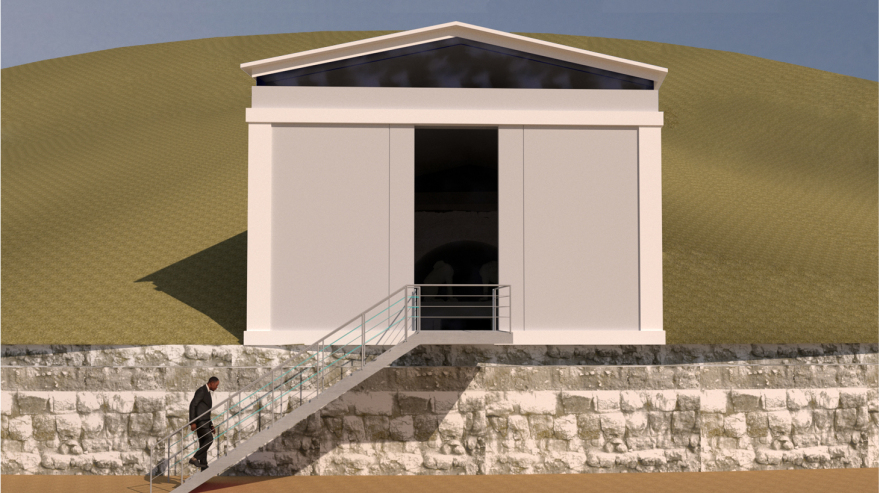
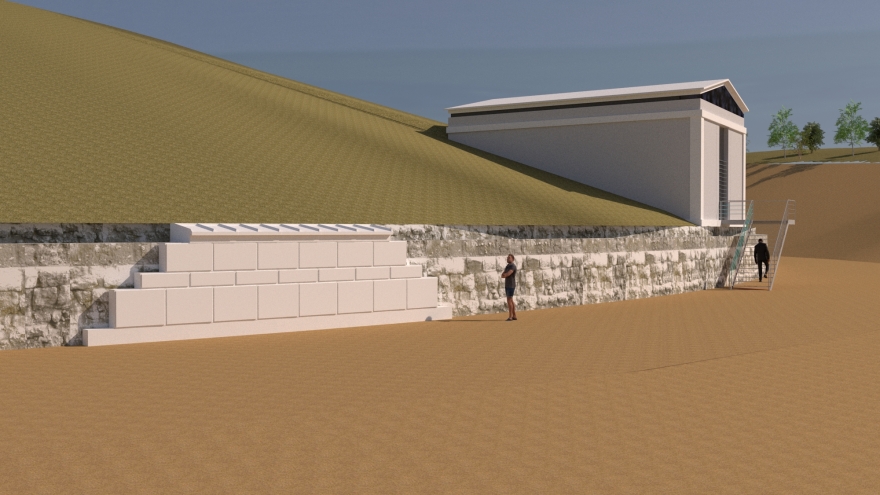
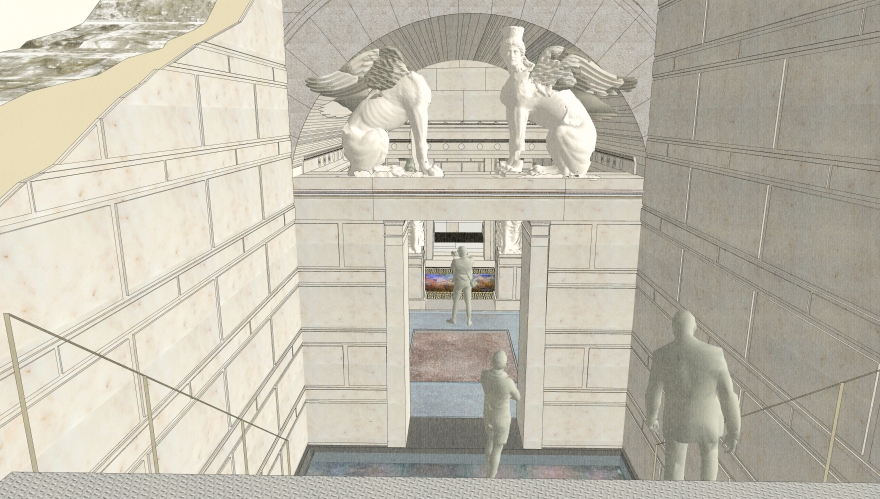
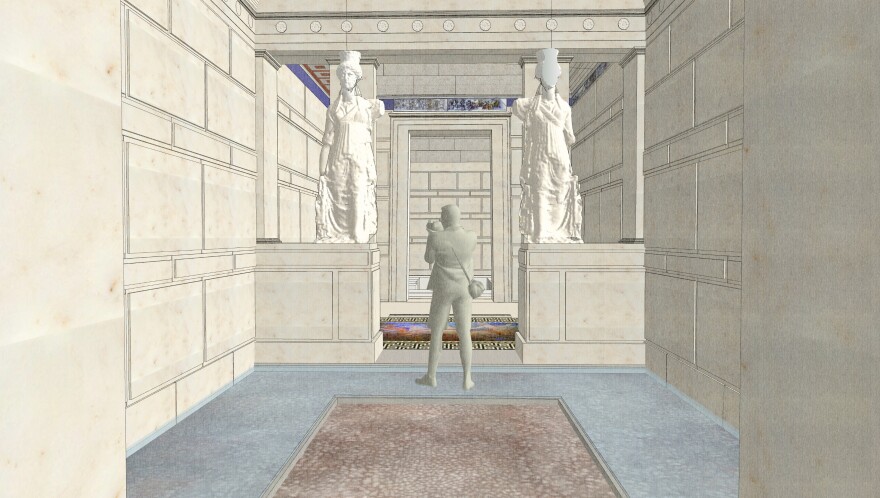
The mysterious Hill 133
This is a natural hill, 133 meters high, which was conventionally named “Hill 133”, by the late archaeologist and excavator of Amphipolis Dimitris Lazaridis, who in the period 196-1965 carried out test sections and excavations. At that time, pottery shells from the geometric, archaic and classical eras were collected from various workshops, Ionian, Attic and local.
At the beginning of 2020, geophysical surveys were carried out in the same area by the team of Professor Grigoris Tsokas, who “showed” in the subsoil “architectural remains”, which refer to residential units or public buildings. According to what Mr. Tsokas had stated at the time, there does not seem to be a burial monument inside the hill, analogous to the Casta Tomb, while at the top there is scattered extensive pottery, but also evidence of ancient habitation.
The Ephorate of Antiquities of Serres in collaboration with the Directorate of Prehistoric and Classical Antiquities has already started systematic excavations in the area, which have been interrupted due to winter, and in places that – based on the results of geophysical surveys – are of interest. At the same time, the Directorate for the Restoration of Ancient Monuments has begun the mapping and study of the scattered architectural members, which were located on Hill 133.
It is probable that in this place was the ancient city of Nine Streets, which pre-existed Amphipolis. The archaeological dig, however, will confirm this theory in the future. It is believed that the hill was inhabited from the late Neolithic era, reaching up to Roman times.